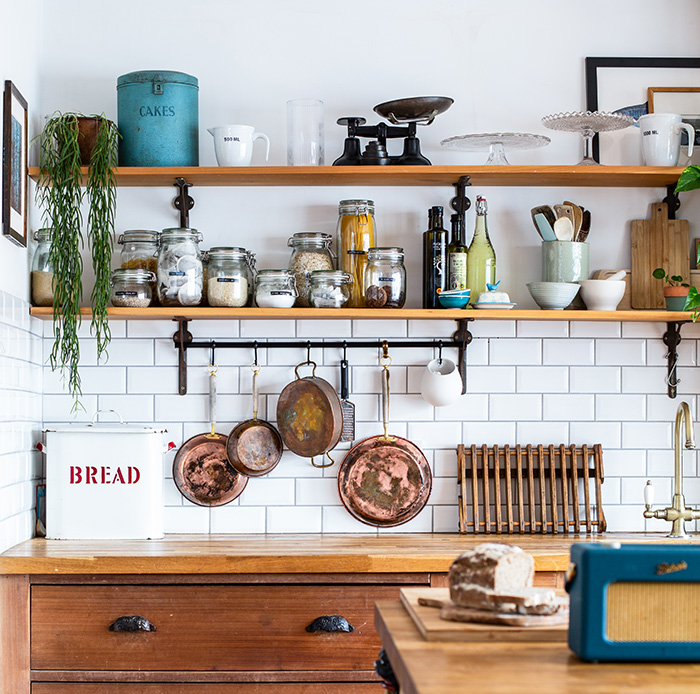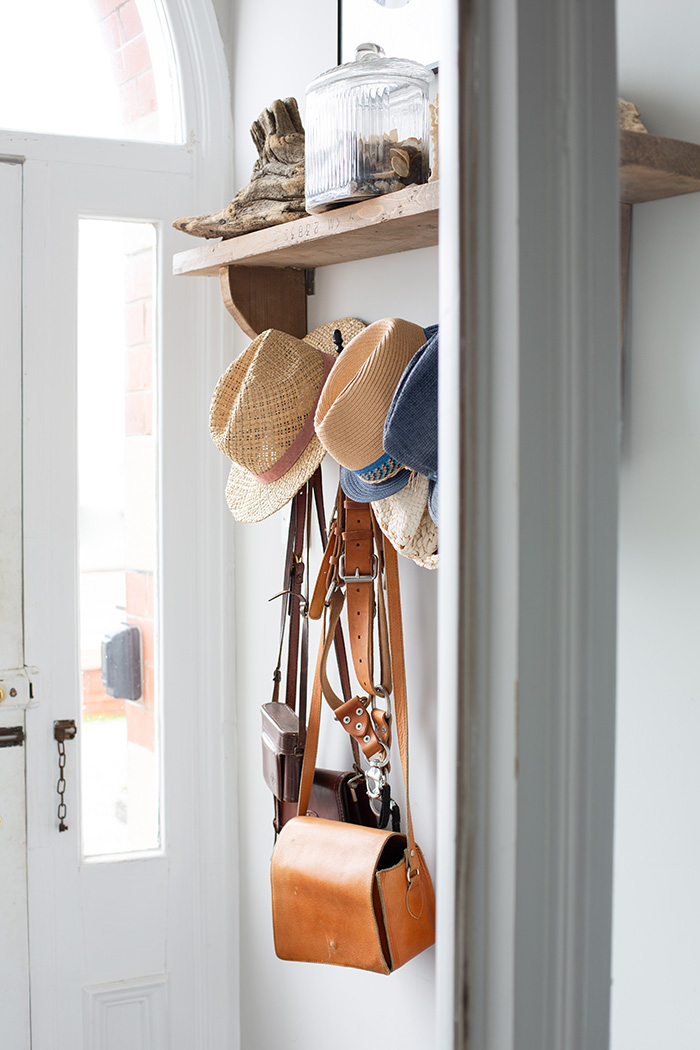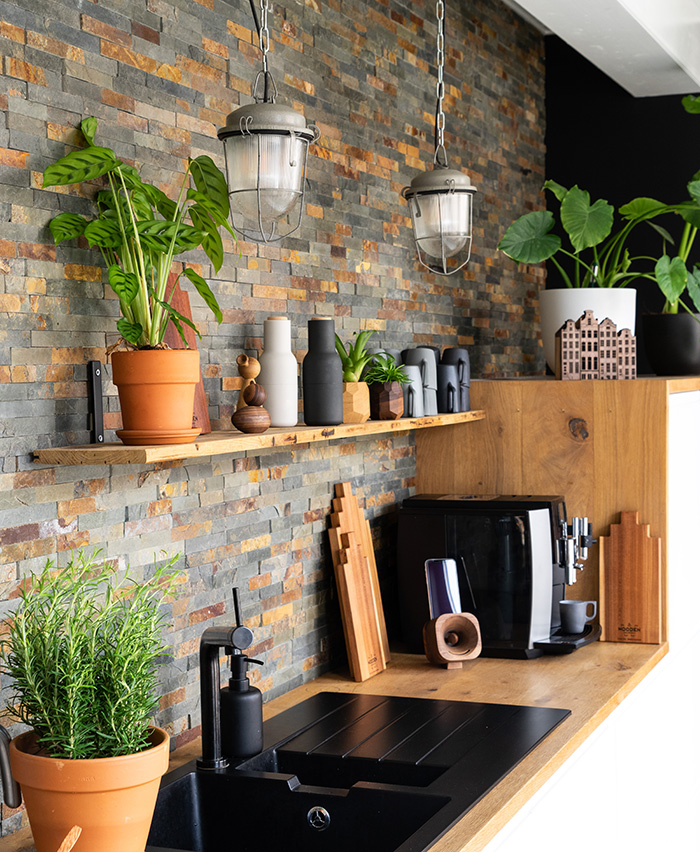Make a scaffold-board shelf
gardentrading.co.uk
Installing a scaffold-board shelf is a thrifty and fun project that’s perfect for using salvaged materials
These shelves work well for displays, in an alcove, or as open shelving in the kitchen or bathroom. Look for older boards with bags of character and metal bands in good condition on the ends.
1 Revamp the old scaffold plank
Remove the metal bands from the ends of the plank and cut the board to your desired length with a saw. Lightly sand and plane the sides and edges, then seal the surface with a matt varnish, oil or wax. Screw the bands back on your new shelf.
2 Decide on your fixings
In an alcove where the shelves run wall-to-wall you can opt for invisible fixings for a ‘floating shelf’ look, but on other walls you’ll need metal brackets.

Tamsyn Morgans
3 Check your wall
‘It’s usually either solid brick or stud partition,’ says DIY expert Wayne Perrey. ‘Tap with your knuckles: if it sounds solid, it’s probably brick; if it’s hollow, it’s a stud partition wall made with wooden battens and plasterboard.’
4 Installing on brick
For a brick wall, use a large wall plug from any DIY store, and the packet will tell you which size and type drill bit to use. ‘A lot of people drill the hole too big,’ says Wayne. ‘But don’t panic – if that happens, put the plug in but then push spent matchsticks or cocktail sticks in there to make it as tight as possible. This also works for securing loose toilet-roll holders or towel rails, for example. It’s a really good trick.’

Tamsyn Morgans
5 Installing on plasterboard
For plasterboard, you’ll need to think more carefully about location. ‘Remember that plasterboard is basically two sheets of paper with chalky plaster in the middle, so it’s not suitable for a heavy shelf that you plan to put books on, for instance,’ says Wayne.
‘Try to find the vertical battens behind the plasterboard; these are usually every 40cm apart,’ he continues. ‘As you tap from left to right across a metre in the middle, it will make a hollow drum sound, but when you tap the batten it sounds tight/dead. Then you can put a wood screw straight in. There’s no need to drill a pilot hole or plug because the wood is the plug. If you want to hang it in a position where there is no batten, then you’ll need to use a self-drilling metal anchor, which you can install with a Phillips screwdriver into the plasterboard. But remember you won’t be able to put anything heavy on the shelf.’

@jellinadetmar
Sourcebook
- Reclaimed scaffold boards Buy in bulk from suppliers such as Scaffolding Supplies for Sale and Hadley Reclaimed. For small quantities, try reclamation yards such as Ace Reclamation or Gardiners.
- Prefinished shelves If you don’t want to revamp your own board, Etsy is a great place to find scaffold shelves that have already been sanded, waxed and supplied with the correct fixing. Try sellers such as Grace & Olive, or Pipe Dream Furniture.
WORDS: LINDSEY HARRAD
Before you go...
...fancy automatic entry to all future competitions?
Simply register online today for FREE and you will get:
Automatic entry to all current and future competitions.
Access to Reclaim Inspiration - an online visual pinboard for saving all your home and style inspiration.
A regular newsletter of inspiration, ideas and advice.

Save all your articles in one place
Become a Reclaim Member to save all your home and style inspiration. Simply login or register online today for FREE and you will get:
Automatic entry to all current and future competitions.
Access to Reclaim Inspiration - an online visual pinboard for saving all your home and style inspiration.
A regular newsletter of inspiration, ideas and advice.








